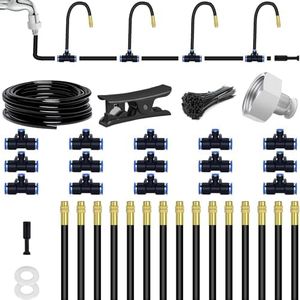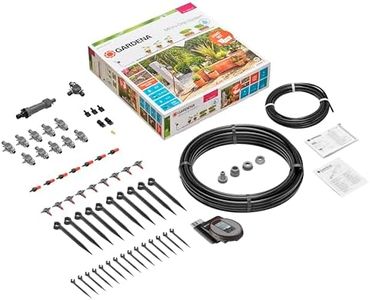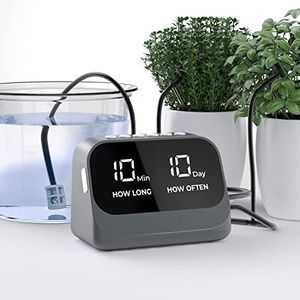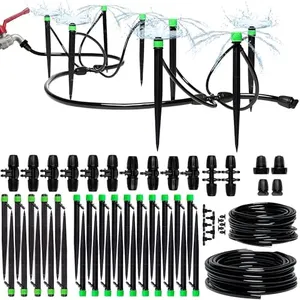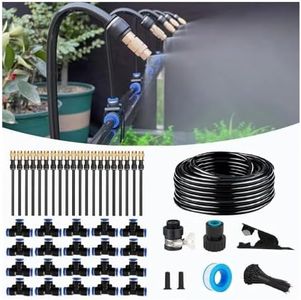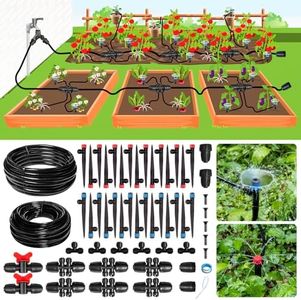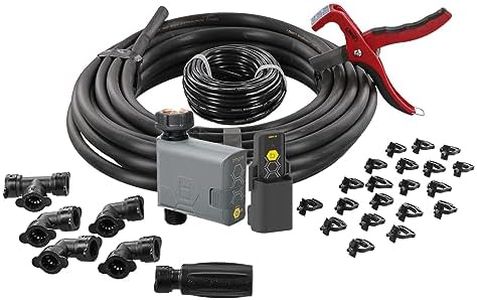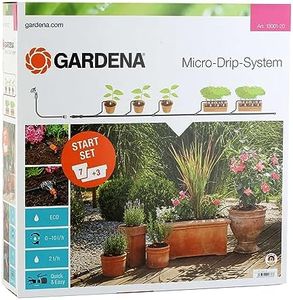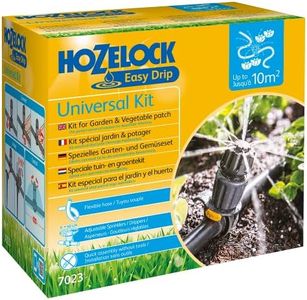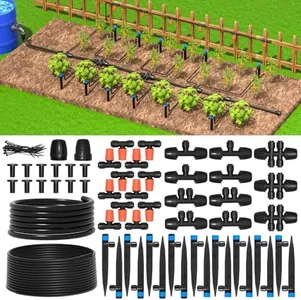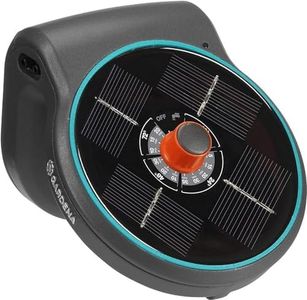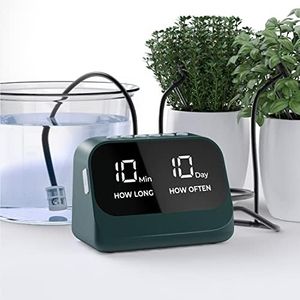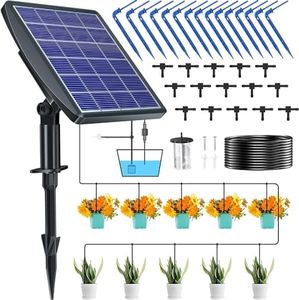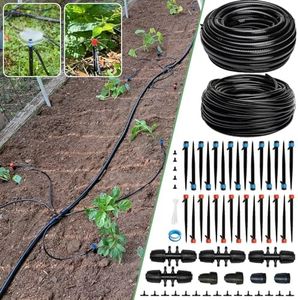We Use CookiesWe use cookies to enhance the security, performance,
functionality and for analytical and promotional activities. By continuing to browse this site you
are agreeing to our privacy policy
10 Best Drip Irrigation Kits
From leading brands and best sellers available on the web.Buying Guide for the Best Drip Irrigation Kits
Drip irrigation kits are a smart way to water plants efficiently and save time, especially for gardens, flowerbeds, or even potted plants. The idea is to deliver water slowly and directly to the roots, helping plants grow better and minimizing water wastage. With a wide variety of kits on the market, it's important to consider your garden's size, layout, and what types of plants you have. By understanding the key components and features of drip irrigation kits, you can make a choice that is easy to install, reliable, and meets your watering needs.Coverage AreaThe coverage area tells you how much space the kit can irrigate effectively. This is important because getting a kit that’s too small will leave part of your garden dry, while one that’s too large could mean paying for more than you need. Coverage areas are often described in square feet or meters. Smaller kits might cover up to 100 square feet, which suits balconies, patios, or small raised beds. Medium kits typically handle 100-500 square feet, ideal for most home gardens. Large kits go beyond 500 square feet, which is great for big yards or multiple garden beds. To pick the right coverage, measure your watering area and choose a kit that matches or slightly exceeds your needs, so you can expand if you plant more later.
Type and Number of EmittersEmitters are the parts of the system that deliver water to your plants. The type (like drip emitters, micro-sprayers, or soaker hoses) affects how water is distributed. This is important because different plants and layouts need different watering styles. For example, drip emitters work well for individual plants, micro-sprayers cover small areas, and soaker hoses are good for rows. Kits vary in the number of emitters, from just a handful (good for pots or small vegetable patches) to dozens (for large or complex gardens). Consider what you’re growing, how closely plants are spaced, and how easy it is to adapt the layout if your garden changes over time. If you have a mix of closely packed and spaced-out plants, look for kits with a mix of emitter types.
Tubing Length and DiameterThe tubing is the network that carries water from your hose or tap to the plants. The length and diameter of the tubing shape how far and how efficiently water can travel. Longer tubing lets you reach far corners of your garden, while wider tubes allow water to flow to more emitters at the same time. Kits with 25-50 feet of tubing suit small beds or patios, 50-100 feet fits average gardens, and over 100 feet is for larger or spread-out plots. Diameter typically ranges from 1/4 inch (for short runs and tight spaces) to 1/2 inch (for larger setups). Choose a kit with enough tubing for your space, allowing some extra for navigating around obstacles.
Water Pressure CompatibilityDrip systems need the right water pressure to work well, not too strong or weak. Too high pressure can damage the system and pop parts off; too low and the water won’t reach all emitters. Some kits come with pressure regulators built in, making them easy to use with typical outdoor faucets; others require you to add one or adjust your tap. Home water pressure is usually between 30-60 PSI, and most drip systems work best around 20-30 PSI. If you have particularly high or low water pressure, look for a kit that mentions compatibility with your range or includes a regulator.
Adjustability and ExpandabilityIt’s helpful if you can adjust the amount of water each plant receives or add more components as your garden changes. Adjustable emitters let you control how much water each plant gets, which is important if you have a variety of crops with different needs. Expandable kits allow you to connect extra tubing or more emitters later on. If you’re new to drip irrigation or likely to change your setup, look for kits that mention easy adjustments and compatibility with standard connectors or extensions.
Ease of Installation and InstructionsA kit that’s easy to set up will save you frustration and time. This involves clear instructions, simple push-together connectors, and all needed parts included. Some kits are labeled as ‘tool-free’ or ‘beginner-friendly,’ which can make the process smoother, especially if it’s your first time. Consider your confidence with DIY projects—if you want something straightforward, check for kits that stress easy installation and provide step-by-step guides or online videos.
Filter and MaintenanceFilters keep dirt and debris from clogging the emitters, which keeps the system running efficiently over time. Maintenance features, like removable emitters or inline filters, are important for long-term reliability. Some kits include a filter as standard, while others may require you to purchase one separately. If you have hard or dirty water, or lots of debris risk, pick a kit with a good filter included and easy access for cleaning.
